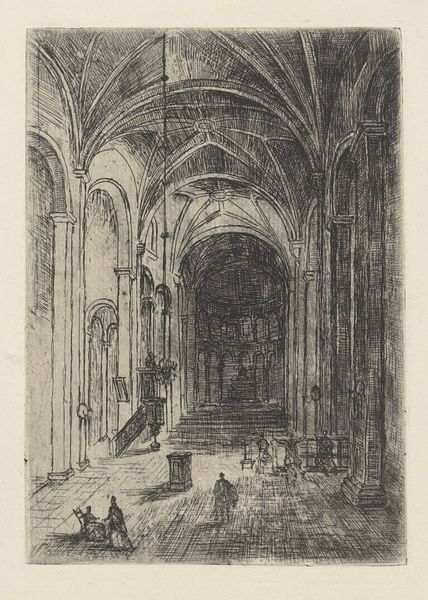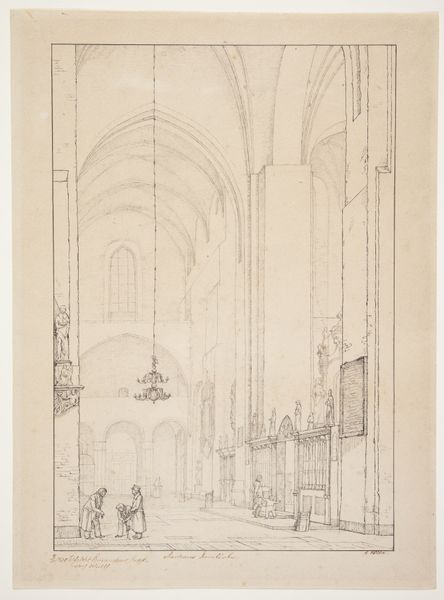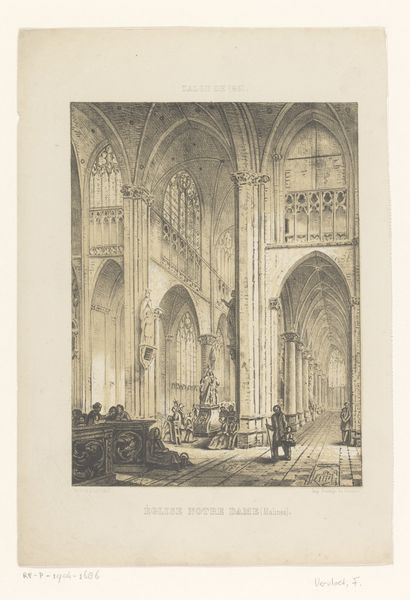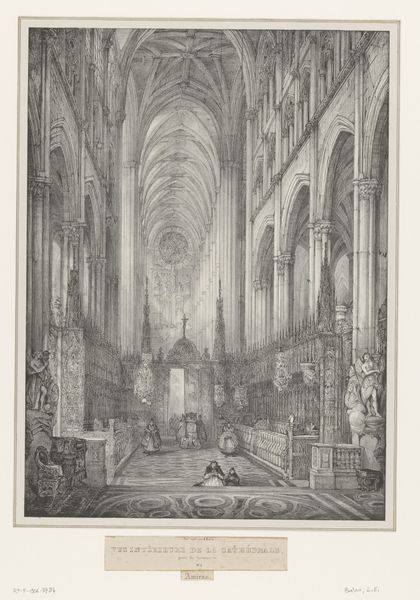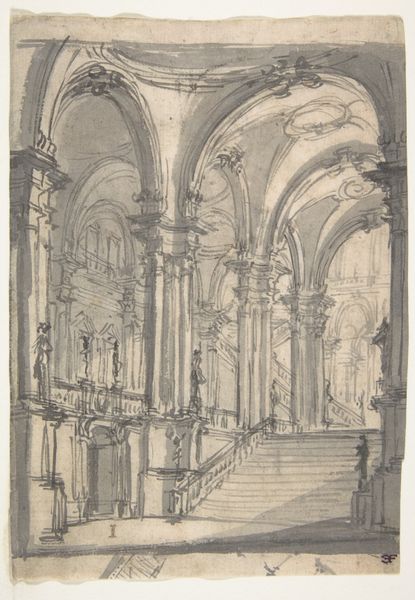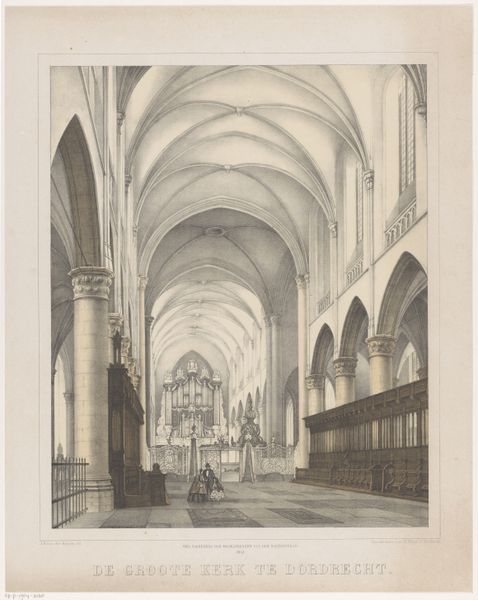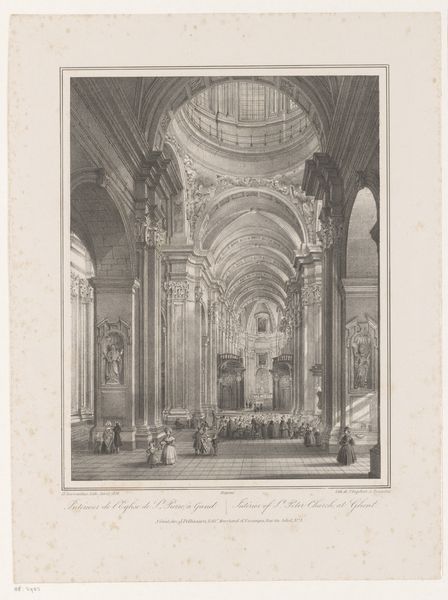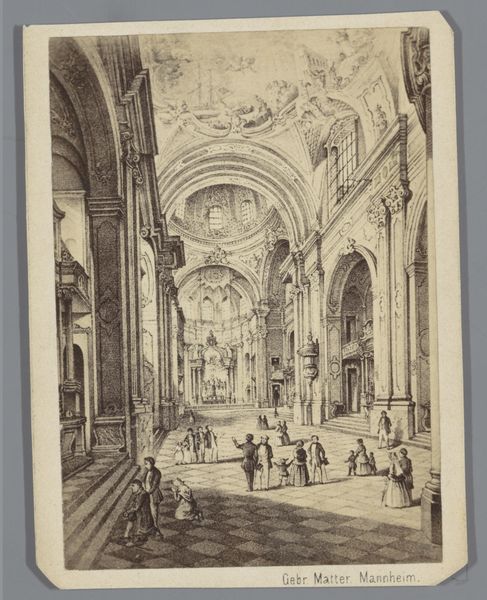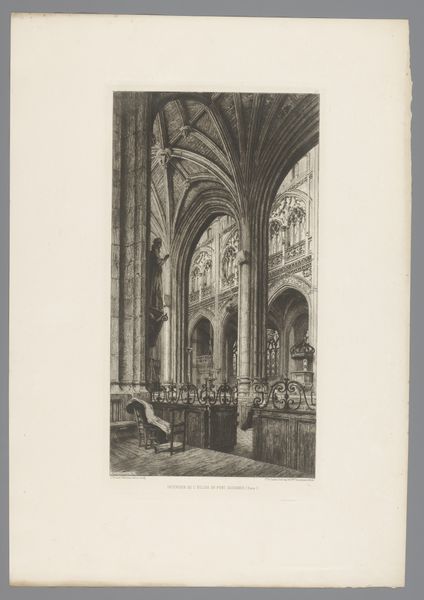
Interieur van de Onze-Lieve-Vrouwe-Basiliek te Maastricht 1830 - 1899
0:00
0:00
drawing, ink, pen
#
drawing
#
pen sketch
#
landscape
#
ink
#
pen work
#
pen
#
genre-painting
Dimensions: height 183 mm, width 132 mm
Copyright: Rijks Museum: Open Domain
Alexander Schaepkens made this etching of the interior of the Onze-Lieve-Vrouwe Basilica in Maastricht in the 19th century. The basilica's architecture reflects centuries of religious and social history in the Netherlands. The image creates meaning through its detailed rendering of the church's architectural features, offering a glimpse into the sacred space and its importance to the community. Consider the role of the Catholic Church in 19th-century Dutch society, particularly its relationship to political power, social class, and cultural identity. Schaepkens’s depiction of the church interior reflects a conservative vision of religious and social order. Does it critique the institutions of art? Does it engage with the debates of his time? To understand this etching better, researchers might consult local historical records, architectural studies of the basilica, and biographical information on the artist. The meaning of art is contingent on its social and institutional context.
Comments
No comments
Be the first to comment and join the conversation on the ultimate creative platform.
